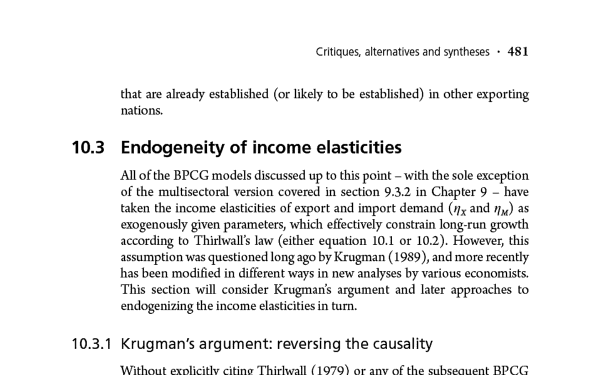Robert Blecker and Mark Setterfield have a new book, Heterodox Macroeconomics: Models Of Demand, Distribution And Growth.
In that there’s a chapter, Balance-Of-Payments Constrained Growth II: Critiques, Alternatives And Synthesis. It has an interesting section where income elasticities of trade are themselves thought to be endogenous.
There are of course many critiques of balance-of-payments constraint growth and Thirlwall’s law but the better ones are more about improvements than anything damaging for the theory. The ideas of Nicholas Kaldor stand.
As emphasised by the authors themselves (page 485), the endogeneity of income elasticities itself is consistent with the Kaldorian idea of circular and cumulative causation.
Till now, circular and cumulative causation was thought via price effects:
Higher production → higher productivity → higher price competitiveness
But there’s no reason that success can’t increase non-price competitiveness itself, i.e., income elasticities.
The book discusses some of the studies.
It’s interesting to note that it was Paul Krugman who first proposed the idea that income elasticities aren’t fixed and that growth can lead to change in the elasticities. But he refused to accept the causality as implied by Thirlwall’s law. The right causality is both ways. Circular and cumulative causation!
